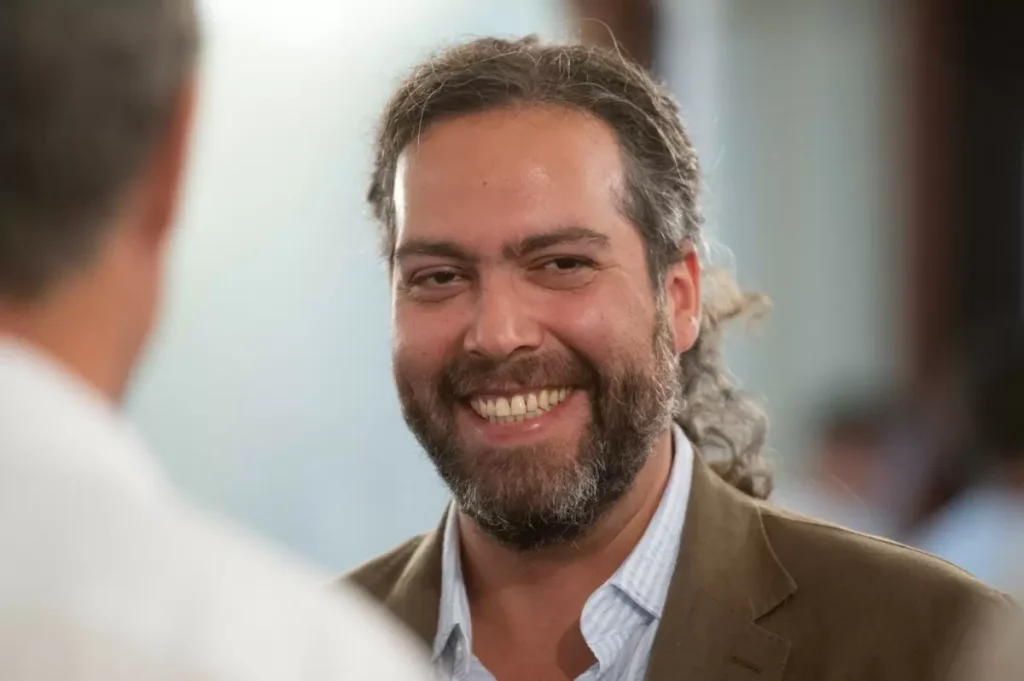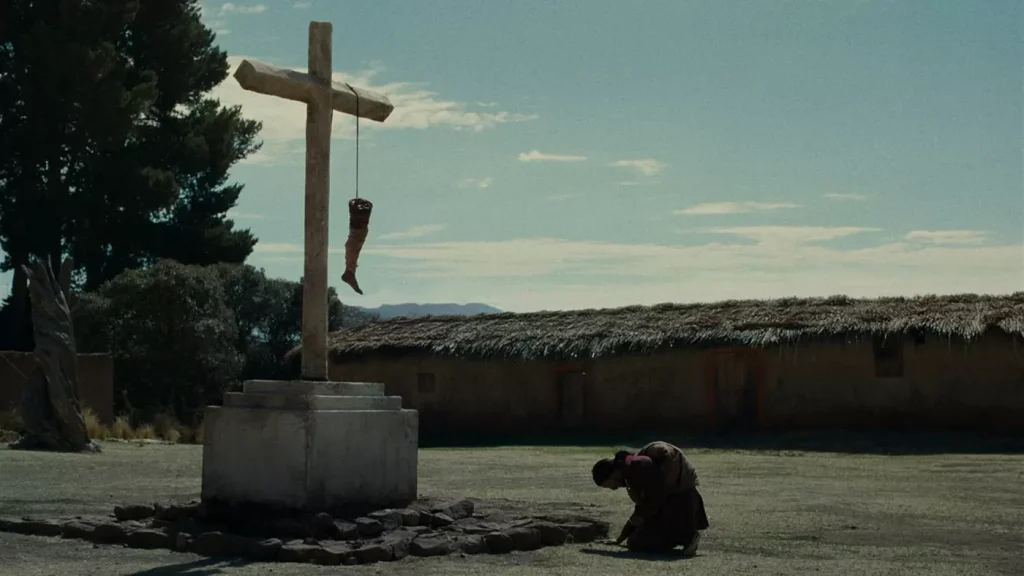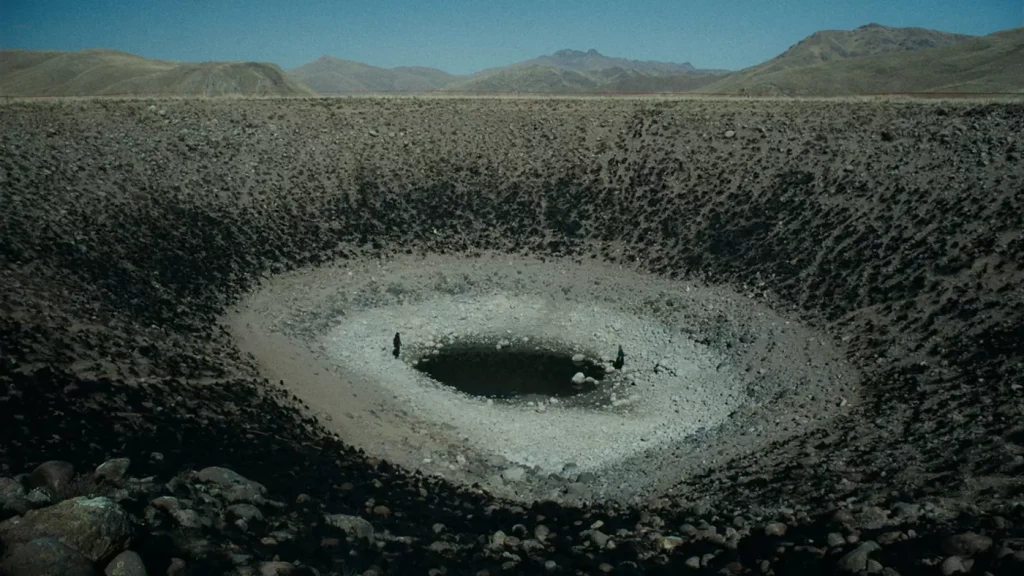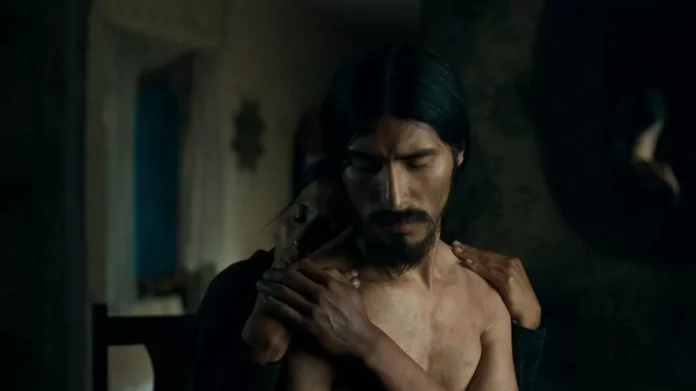Colonialism and neocolonialism collide with the violence of a meteorite impact in The Anatomy of the Horses, the debut feature by Peruvian filmmaker Daniel Vidal Toche, based in Madrid. The film unfolds across two eras—the 18th century and the present day—to explore the mechanisms of oppression and exploitation in his native Peru, a country he describes as trapped in an unbroken cycle of corruption.
“Things in Peru are getting more complicated. It’s no longer about left or right politics, but a mafia that has infiltrated the entire system,” Vidal told C7nema at the Karlovy Vary Film Festival, where his film competed in the Proxima section. “I spent a lot of time in the region where we shot, Puno (or Punu in Quechua), and something crucial is happening there politically. We lived through years of dictatorship under Alberto Fujimori (1938–2024), which created metastases from the cancer at the foundation of this country. Puno has been a barrier preventing Fujimori supporters from returning to power. It’s a place that knows well where not to go, in a country that violently aligns itself with capitalist forces—brutally segregating and crushing any hope for a real nation. If anywhere can still imagine the possibility of a country, it’s the region where I made this film.”

In The Anatomy of the Horses, viewers first encounter 18th-century revolutionary Ángel Pumacahua, fleeing to his village after defeat in battle. With a meteorite looming on the horizon, we realise this revolutionary now inhabits the 21st-century Peruvian Andes, witnessing his people’s struggle against mining exploitation—a scourge that poisons crops and births mutated animals. The disappearance of a young activist further drives the narrative. Vidal credits the film’s creation to the help of two close collaborators, Juan Quispe and Edith Ramos, who share his “political heart.”
“I needed to introduce corrupt politicians entangled in the tentacles of capitalism, which denies all alternatives. These politicians are useless—incapable of the kind of political action practiced by rural communities. The political thinking in these communities is vast, active, and communal, unlike the capital’s elite, who say the people lack education. All this formed the foundation, along with the Quechua language, to imagine this film… which draws on certain mythological elements I discovered and worked on with the actors. I wanted to expel Catholic elements from the film’s spirituality. We tried to ritualise parts suppressed over time. Beneath many Catholic churches lie huacas—Inca temples. I believe we need to rebuild our past. The real problem is capitalism’s brutality near mining sites. Mining has polluted rivers, harming agriculture and livestock. And those who protest the mines must be careful. We’re talking about people with fortunes in the millions and strong ties to power. What can we do? Denouncing them doesn’t work. We have to raise questions so the discussion can happen. There has to be a way to challenge these structures.”
Vidal is already working on a new, more abstract project, which he describes as exploring “what makes something ours”—a film about private property. He believes cinema “has to be political,” but doubts he will be able to film in Peru anytime soon, given the film laws passed by the country’s right-wing government.


When asked about the challenges in making The Anatomy of the Horses, Vidal spoke of countless physical hardships but especially ethical concerns: “I’m genuinely worried about the people who will watch the film without needing subtitles [those who speak Quechua]. I want to know what they think—especially their initial distrust when a white filmmaker comes to make a film about them. That distrust is perfectly normal. I want to know if they feel I understood the revolutionary spirit that still lives there, which is part of me too, since the region is part of my country. Can we really reconcile as a nation?
There are two complicated ways to interpret my work. If approached with an ethnographic gaze, which doesn’t interest me, my film could be easily dismissed as exploitation or paternalism. Those are two traps we can fall into. Filming in Quechua almost guarantees entry into certain festival circuits. I risk falling into that, which raised many ethical questions for me. Also, by taking over a space that is not mine to film, perhaps I’m committing a form of colonialism myself. That was one of my biggest struggles.”


